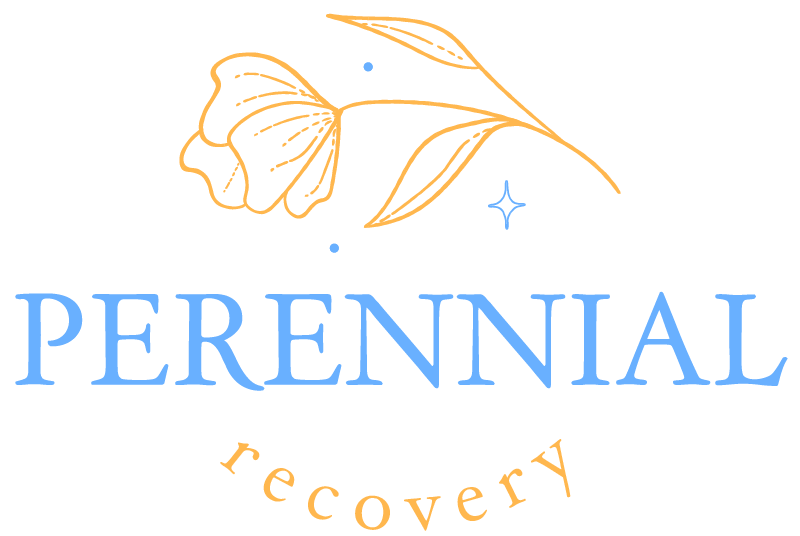Understanding Opiates and Opioids
When it comes to distinguishing between opiates and opioids, it’s essential to have a clear understanding of each of these substances.

Defining Opiates
Opiates refer to drugs that are derived naturally from the opium poppy plant. These substances have been used for centuries for their pain-relieving properties. Common examples of opiates include morphine and codeine.
Defining Opioids
On the other hand, opioids encompass a broader category of substances that include both natural and synthetic compounds. In addition to natural opiates derived from the opium poppy plant, opioids also include synthetic or semi-synthetic drugs that mimic the effects of opiates. Examples of opioids include fentanyl, oxycodone, and hydrocodone.
Understanding the distinction between opiates and opioids is fundamental in the context of their chemical composition, usage, effects on the body, legal implications, and risks associated with misuse. Through this knowledge, individuals can make informed decisions regarding their healthcare and potential treatment options.
Origins and Usage
Exploring the origins and uses of opiates and opioids provides valuable insights into these substances and their historical and contemporary roles in healthcare.
Origins of Opiates
Opiates, derived from the opium poppy plant, have been used for centuries for their potent pain-relieving properties. The cultivation of opium poppies dates back to ancient civilizations, with opium being one of the earliest known medicinal substances. Opiates such as morphine and codeine are natural compounds extracted from the opium poppy plant.
Origins of Opioids
In contrast to opiates, opioids encompass a broader category of substances that include both natural and synthetic compounds. The discovery of opioids stemmed from efforts to create synthetic alternatives to natural opiates. The first synthetic opioid, diacetylmorphine (heroin), was developed in the late 19th century.
Common Uses of Opiates and Opioids
Opiates and opioids are primarily used for their analgesic properties to manage pain ranging from acute to chronic conditions. Both classes of substances act on the body’s opioid receptors, altering pain perception and producing pain relief. In addition to pain management, opiates and opioids may also be prescribed for other conditions such as cough suppression and diarrhea treatment.

Understanding the origins and common uses of opiates and opioids sheds light on their historical contexts and the diversity of therapeutic applications these substances offer in modern medicine.
Chemical Classification
When delving into the realm of opiate and opioid medications, understanding their chemical classification is essential. This section will differentiate between natural and synthetic variations and highlight the key variances in their chemical structures.
Natural vs. Synthetic
Opiates are naturally occurring compounds derived from the opium poppy plant. They have been used for centuries for their pain-relieving properties. Examples of opiates include morphine and codeine. On the other hand, opioids are synthetic or partially synthetic substances that mimic the effects of opiates in the body. These compounds are created in laboratories and can also interact with the body’s opioid receptors to alleviate pain. Some common opioids include oxycodone and fentanyl.
Differences in Chemical Structure

Understanding the distinction between natural opiates and synthetic opioids is fundamental in comprehending how these substances interact with the body and their role in pain management. While both have similar therapeutic applications, their chemical compositions and origins set them apart in the realm of pharmacology.
Effects on the Body
When it comes to the impact on the body, there are both similarities and differences between opiates and opioids. Understanding these effects is crucial in distinguishing between the two categories of substances.
Similarities in Effects
Both opiates and opioids work by binding to specific receptors in the brain and body known as opioid receptors. By interacting with these receptors, both types of substances can produce similar effects such as pain relief, sedation, and feelings of euphoria.

Variances in Side Effects
While the basic effects of opiates and opioids may be similar, there are differences in the potential side effects associated with these substances. Opiates, which are derived from the opium poppy plant, tend to have more pronounced side effects compared to synthetic opioids.

Understanding the nuances in the effects and side effects of opiates and opioids is essential for healthcare providers and individuals using these medications. Proper education and awareness can help mitigate risks and ensure safe and effective use of these substances in medical settings.
Legal Status and Regulation
When it comes to the legal status and regulation of opiates and opioids, understanding their classification by law and the regulations surrounding their prescriptions is crucial in the healthcare landscape.
Classification by Law
Opiates and opioids are subject to specific classifications under various laws, aiming to control their distribution and use. The classification typically distinguishes between different schedules based on the potential for abuse and medical value.

Regulation and Prescriptions
The regulation and prescribing guidelines for opiates and opioids are stringent due to their potential for misuse and addiction. Healthcare providers must adhere to specific regulations when prescribing these medications to ensure patient safety and prevent misuse.

Navigating the legal landscape surrounding opiates and opioids involves understanding their classifications under the law and the stringent regulations governing their prescriptions. By adhering to these guidelines, healthcare providers can help mitigate the risks associated with these potent medications and ensure their safe and appropriate use for individuals in need of pain management or other medical treatments.
Misuse and Addiction
When it comes to opiates and opioids, misuse and addiction are significant concerns that can have serious consequences. Understanding the risk factors associated with misuse and addiction, as well as the available treatment options, is key to addressing this complex issue.
Misuse and Addiction
When it comes to opiates and opioids, misuse and addiction are significant concerns that can have serious consequences. These powerful substances, while beneficial for managing pain when used as prescribed, can lead to devastating outcomes when misused. Understanding the risk factors associated with misuse and addiction, as well as the available treatment options, is key to addressing this complex issue that affects individuals, families, and communities across the nation.
Risk Factors
Misuse of opiates and opioids can occur for various reasons, and certain factors may increase the likelihood of developing a substance use disorder. It’s important to note that anyone can be at risk for misuse and addiction, regardless of their background or circumstances. However, recognizing common risk factors can help in identifying individuals who may be more vulnerable and in need of support. Common risk factors for misuse and addiction include:
Risk Factors for Misuse and Addiction
History of substance abuse: Individuals with a past history of drug or alcohol abuse are at higher risk of developing an addiction to opiates or opioids.
Genetics and family history of addiction: There is evidence to suggest that genetic factors can contribute to an increased susceptibility to addiction.
Mental health conditions like anxiety or depression: Co-occurring mental health disorders can increase the likelihood of substance misuse as a form of self-medication.
Chronic pain conditions: Individuals dealing with long-term pain may be more likely to misuse pain medications in an attempt to find relief.
Easy access to prescription medications: Availability of opioids, whether through legitimate prescriptions or illicit means, can increase the risk of misuse.
Peer pressure or social environment that encourages drug use: Social influences and surroundings can play a significant role in the initiation and continuation of drug use.
Trauma or adverse childhood experiences: Individuals who have experienced trauma or difficult life events may be more susceptible to substance misuse as a coping mechanism.
Lack of education about the risks of opioid use: Insufficient knowledge about the potential dangers of these substances can lead to unintentional misuse.
It is essential to recognize these risk factors and take proactive measures to prevent the misuse of opiates and opioids. Education, awareness, and access to appropriate healthcare resources play a crucial role in mitigating these risks and promoting safe and responsible use of these substances. Healthcare providers, community organizations, and policymakers all have important roles to play in addressing these risk factors and implementing preventive strategies.
Treatment Options
When misuse of opiates and opioids leads to addiction, seeking professional help and treatment is critical for recovery. Addiction is a complex disease that affects both the brain and behavior, and overcoming it often requires a multifaceted approach. There are various treatment options available to assist individuals in overcoming addiction and managing the challenges associated with substance use disorders.
Treatment Options for Opiate and Opioid Addiction
Detoxification programs to safely manage withdrawal symptoms: These programs provide medical supervision and support during the initial phase of discontinuing opioid use, helping individuals navigate the often difficult and potentially dangerous withdrawal process.
Inpatient rehabilitation for intensive therapy and support: Residential treatment programs offer a structured environment where individuals can focus entirely on their recovery, free from outside influences and triggers.
Outpatient programs for ongoing treatment and counseling: These programs allow individuals to receive treatment while maintaining their daily responsibilities, offering flexibility and support for those who have completed inpatient treatment or have less severe addictions.
Medication-assisted treatment with medications like methadone or buprenorphine: These FDA-approved medications can help reduce cravings and withdrawal symptoms, allowing individuals to focus on recovery and rebuilding their lives.
Behavioral therapies to address underlying issues and develop coping strategies: Cognitive-behavioral therapy (CBT), motivational interviewing, and other evidence-based therapies can help individuals identify and change negative thought patterns and behaviors associated with addiction.
Support groups and peer recovery programs for ongoing encouragement and guidance: Organizations like Narcotics Anonymous (NA) and SMART Recovery provide a supportive community of individuals who understand the challenges of addiction and recovery.
Holistic approaches such as mindfulness, yoga, and acupuncture: These complementary therapies can help individuals manage stress, improve overall well-being, and support the recovery process.
Family therapy and education: Involving family members in the treatment process can improve outcomes and help repair relationships damaged by addiction.
Aftercare planning and relapse prevention strategies: Developing a comprehensive plan for maintaining sobriety after formal treatment is crucial for long-term recovery success.
Each individual may respond differently to treatment, so it is essential to work with healthcare professionals to develop a personalized treatment plan that addresses the unique needs and circumstances of the individual struggling with opiate or opioid addiction. Treatment should be tailored to the specific needs of the individual, taking into account factors such as the severity of addiction, co-occurring mental health conditions, and personal preferences.
By understanding the risk factors for misuse and addiction and exploring the available treatment options, individuals can take proactive steps towards addressing substance use disorders and promoting recovery and overall well-being. It’s important to remember that recovery is a journey, and setbacks can occur. However, with the right support and resources, individuals can overcome addiction and rebuild their lives.
Collaboration between individuals, healthcare providers, and support systems is essential in navigating the challenges of opiate and opioid misuse and addiction. By working together, we can address this critical public health issue and help those affected by addiction find hope, healing, and a path to lasting recovery.
Sources
https://my.clevelandclinic.org/health/diseases/opioid-withdrawal
https://medlineplus.gov/ency/article/000949.htm
https://www.ncbi.nlm.nih.gov/books/NBK526012/




